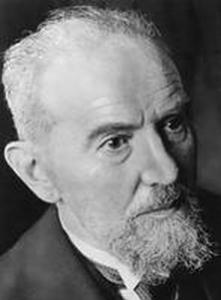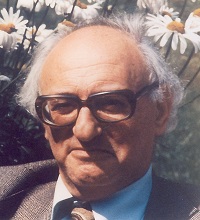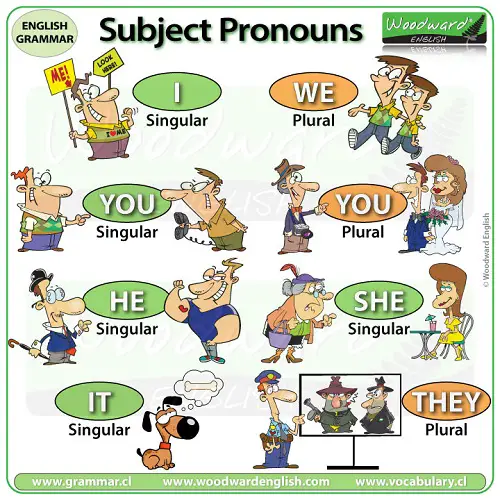|
TRANSLATE THIS ARTICLE
Integral World: Exploring Theories of Everything
An independent forum for a critical discussion of the integral philosophy of Ken Wilber
  Frank Visser, graduated as a psychologist of culture and religion, founded IntegralWorld in 1997. He worked as production manager for various publishing houses and as service manager for various internet companies and lives in Amsterdam. Books: Ken Wilber: Thought as Passion (SUNY, 2003), and The Corona Conspiracy: Combatting Disinformation about the Coronavirus (Kindle, 2020). Frank Visser, graduated as a psychologist of culture and religion, founded IntegralWorld in 1997. He worked as production manager for various publishing houses and as service manager for various internet companies and lives in Amsterdam. Books: Ken Wilber: Thought as Passion (SUNY, 2003), and The Corona Conspiracy: Combatting Disinformation about the Coronavirus (Kindle, 2020). SEE MORE ESSAYS WRITTEN BY FRANK VISSER
Some Notes on
|
|
ONE OR MORE PERSONS |
FOUR QUADRANTS |
PERSONAL PRONOUNS |
|---|---|---|
|
SINGULAR |
I, IT |
I, YOU, HE/SHE |
|
PLURAL |
WE, ITS |
WE, YOU, THEY |
The major differences exist, as noted above, in the other dimension, which complements the singular/plural dimension. In the four quadrant model, the left and right hand sections are defined as the inner versus the outer dimensions of a certain "occasion" (let's take the human organism as example for the sake of simplicity). Therefore, the Upper Left quadrant is filled with thoughts, feelings, stages and states, whereas the Upper Right quadrant is the field of brain processes and observable behavior.
| INNER | OUTER |
|---|---|
|
I |
IT |
|
WE |
ITS |
In contrast, in the personal pronouns scheme, a different metaphor is used, that of psychological distance. To use three keywords, we can define them as: Here, Near and Far (my terms). The I is the person we are ourselves, Here. The You is a person close to us, we can speak to him/her (or more to the point: he/she can hear us). The He/She is a person that lives at a distance. We don't speak to him/her (c.q. he/she can't hear us anymore). So the criterion that distinguishes the second from the third person is wether the person is within the reach of the spoken word:
| HERE | NEAR | FAR |
|---|---|---|
|
I |
YOU | HE/SHE |
|
WE |
YOU | THEY |
An interesting difference between the four quadrant model and the personal pronouns model is that the former seems to stress the group mentality (it is Us—I and We—against the rest of the world of Its). The latter acknowledges the personhood of all of the parties involved. And all three have an outer and inner dimension. Even if I speak to You but not to Him or Her, we are all persons.
So "I" stands for my own being, both internal (my mind) and external (my body), "You" for persons I can communicate with (who have an internal mind and an external bodies as well), and "He/She" stands for persons I don't communicate with, but who definitely have their own internal mind and external bodies as well.[1]
Personalistic Philosophy
I encountered similar thoughts in the Dutch book Denken als Spel ("Thought as Play", 1977) written in the seventies by the Dutch homo universalis Henri van Praag (1916-1988), a prolific writer on subjects of psychology, education and philosophy, both East and West, and among other things co-founder of the Anne Frank Foundation.
"Thought as Play", "Thought as Passion"—interesting parallels for sure...

William Stern (1871–1938)
Van Praag was especially well versed in the early, German, psychological literature. He wrote a ten-volume series on parapsychology, and a four volume series on futurism, of which this book is part III. He was both a mystic and a personalist.
Personalism was founded by the Jewish philosopher and psychologist William Stern (1871-1938). Stern was a the inventor of the IQ concept (later used by Binet). Being a Jew, he fled to the US in 1933 and taught at Duke University until his death.
Van Praag could quote with the greatest ease from De Saussure, the Upanishads and Chomsky in a single paragraph, though his writings were sketchy and written in a hurried and repetitive style—resembling Wilber in many respects, he even created his own university! (in Luxembourg, an International, one would say now, Integral, Academy), and had his own version of integral “mathematics” (i.e. Wilber's theory of perspectives) when he comments on the following joke:
Once a missionary held a sermon in the indigenous language of a group of Indians and confessed: "We all have sinned". After the sermon his listeners said: "That was really honest of you, to confess in public that you and your friends have sinned, but what does that got to do with us?"
The missionary had used the wrong indigenous word for "we"—me and my friends—instead of the intended meaning: I, my friends and you listeners.
Upon which Van Praag comments: A computer translation program would have to decode the "we" as: first person singular + (second person plural + third person plural). Van Praag elaborates much on the complexities of the concept of We. In his opinion, it is a container concept which covers many different meanings, such as "I and You", "I and You All", "I and We", "I and We and You", "I and him", etc. However, We can never replace or contain the second person You, as Wilber suggests.[2]
He was especially interested in these intricacies of language to understand how we can program automated translation software. He did not see this as a feasible project as long as we did not instruct the computer first about these grammatical subtleties.
Language Universals

Henri van Praag (1916-1988)
In Thought as Play Van Praag explores the universal dimensions of symbolism, logic, mathematics, thought and language, througout culture and history. He starts by noting that, to have a good debate, we need to agree on a lot of things first: the terms we use, the logic we use and the facts we acknowledge to exist.
He tells us that language philosophers distinguish between the different worlds we live in in different ways. According to Plato, we live in the real world and the world of Ideas. According to Kant, we live in the world of facts, norms and expectations. According to William Stern, language has developed as articulation of Urraum (Primordial Space), Nahraum (Near Space) and Fernraum (Far Space). Another German psychologist, Karl Bühler mentioned three fundamental functions of language: expression, address and discussion, or respectively the speaker, the one spoken to, and that which is spoken of.
Language reflects these different spaces, as the Spanish language clearly shows in the words este (this), ese (that) and aquel (that over there). Or in the French: cette chaise-ci and cette chaise-là (this chair over here and this chair over there).
According to Van Praag, the same threefold classification can even be used to group the different clauses used in the various languages:
| HERE | NEAR | FAR |
|---|---|---|
|
NOMINATIVUS |
VOCATIVUS | ACCUSATIVUS |
|
SUBJUNCTIVUS |
IMPERATIVUS | INDICATIVUS |
To conclude, some language distinguish between male and female words. Van Praag argues that male words belong to the Here category ("the one who speaks"), female words to the Near category ("the one spoken to"), and neutral words to the Far category ("what is spoken of"). When a (male or female) person is dead, he is considered to have become Neutral—an It.
| HERE | NEAR | FAR |
|---|---|---|
|
MALE |
FEMALE | NEUTRAL |
So "distance"—physical or psychological—is the important variable here, from zero (I) to within reach (you) to out of reach (he/she).
Afterthought
As the final thought of this year, looking back on the tumultous year of 2006, one wonders how much of Wilber's behaviour towards his critics has been shaped by the four quadrant model (as summarized by I, We and It)—so everything not included in the I and the We can be looked at with contempt[3]—where a more personalistic approach would have taught us that, first and foremost, we're all persons, entitled to respect, even if we refuse to speak to eachother—with widely different opinions, for sure, but in the end connected in our search for truth.
NOTES
[1a] Ken Wilber, "Why Do Religions Teach Love and Yet Cause So Much War? Transcending the trauma to get to the truth of the world's faiths", www.beliefnet.com, June 2004.
[1] See also: Mark Edwards, "Another Way of Putting It: My particular take on the four quadrants, holons and suchlike", www.integralworld.net/edwards23.html.
From which:
The “I-We-It-Its” model represents, above all, a set of perspectives - this is why it has these four pronouns of “I-We-It-Its”. But as we all know there are, in fact, six primary perspectives - the singular and plural of first, second and third person.
[2] In Integral Spirituality Wilber states:
“We” is technically first-person plural, but if you and I are communicating, then your second person and my first person are part of this extraordinary “we.” Thus second person is sometimes indicated as “you/we,” or “thou/we,” or sometimes just “we.” (p. 19)
Remember that a “we” in general is formed when a first person singular (“I”) is converted to a first person plural (“we”) by the inclusion of a second person (“you”). That is, I + you = we. (This is why AQAL often lists second person as “you/we.”) (p. 156)
The above personalistic analysis shows the superficiality of Wilber's treatment of the You dimension. Incidentally, one also wonders what else are these musings on personal pronouns other then "technical"?
[3] Rumour has it that the first acronym chosen for the AQAL model was FQAL ("Four Quadrants, All Levels"), which could be pronounced as: Fuck You All... It was never used, but it conveys the spirit of Wilber's attitude towards his critics quite well, unfortunately.

